Search results for 'omer'
-
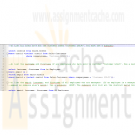
IT452 Unit 4 Outer Joins and Subqueries
$20.00IT452 Unit 4 Outer Joins and Subqueries
Learn More
a) List all order ID's for the customer named 'Customer LOLJO'. You must use a subquery.
b) List the lastname and firstname of all employees who have sold to customer 'Customer LOLJO'. Use a nested subquery (no joins).
c) List the empid, lastname, and firstname of all employees who are managers. (If an employee is a manager, his/her empid will appear as someone else's mgrid.) Use a subquery. (HINT: The subquery will list all the distinct mgrid values.)
d) List the empid, lastname, and firstname of all employees who did not take an order in the month of February, 2007. Write an uncorrelated subquery that uses NOT IN.
c) List the empid, lastname, and firstname of all employees who did not take an order in the month of February, 2007. Write a correlated subquery that uses NOT EXISTS.
e) List the empid, lastname, and firstname of all employees who did not take an order in the month of February, 2007. Use an outer join.
(HINT: First, write an inner join that returns all the (distinct) employees who *did* take an order during that month. Next, change WHERE to AND so that the predicate is part of the ON clause of the join. Finally, change your join to an outer join, using the WHERE clause to filter for only non-matching rows.)
f) Write a subquery that returns the first order placed in the orders table
g) Using a scalar subquery (returns only 1 row) to outer query, write a query to returns the customer id for orders placed by the sales rep Judy Lew
h) Select the EmployeeID, lastname, firstname for the employee that had sales but does NOT have a manager. (requires Inner Join and subquery)
i) Find the customer, shipcountry and number of orders that the customer made where the customer is not located in the United States. (Requires a Count, subquery and condition) -
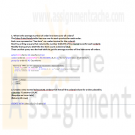
IT452 Unit 5 Table Expressions
$20.00IT452 Unit 5 Table Expressions
Learn More
1. What is the average number of order line items over all orders? The Sales.OrderDetails table has one row for each product for each order. Each row represents a "line item" on a sales invoice for the orderid. Start by writing a query that returns the number (COUNT) of line items (rows) for each orderid. Modify that query to CAST the line item count as decimal (8,4). Then use that query as a derived table to get the average number of line items over all orders.
(Returns 9 rows)
2. Create a view named Sales.LOLJO_Orders that lists all the orderid values for orders placed by customer 'Customer LOLJO'. (Requires an Inner Join)
(Returns 10 rows)
3. Create a view named Sales.WhoSoldToLOLJO that lists the empid, lastname, and firstname of all employees who have sold to customer 'Customer LOLJO'. Execute a Select query to show the results of the view.
(6 rows)
4. Write a CTE to extract the employee with the most orders. Write the Outer query to display the EmployeeID and Highest Orders Sold Count for that Employee Result: (empid 4, 156 orders)
5. Create an inline table-valued function named Sales.fCustOrders that takes a customer name as an argument and returns the orderid and orderdate values for orders placed by that customer. The orderdate should have the date only, no time (Hint: CAST). Your project should have your CREATE FUNCTION statement. Query the function to see the results from the function for the argument (page 165) for companyname 'Customer MLTDN'.
(4 rows)
6. Create a VIEW called TopSales that shows the TOP 10 percent of sales. Verify the results of the view in a SELECT clause.
(216 rows)
7. Encrypt the TopSales View and bind the schema so that it cannot be dropped or altered created in #6. Test it by trying to remove the producID from the underlying Table and show the error
8. Change the TopSales view from # 7 so that it contains a filter that only has qty = 130 and does not allow modifications. Test it with an Update Statement by trying to change the quantity. -
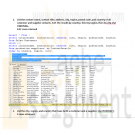
IT452 Unit 6 Set Operations and Data Modification
$20.00IT452 Unit 6 Set Operations and Data Modification
Learn More
1. List the contact name, contact title, address, city, region, postal code, and country of all customer and supplier contacts. Sort the results by country, then by region, then by city. Use UNION ALL. 120 rows returned
2. List the city, region, and country that have both a customer and a supplier. Use INTERSECT. 4 rows returned
3. Create a table in the tempdb database using the following CREATE TABLE statement:
USE tempdb; CREATE TABLE dbo.DOGS ( DogID int IDENTITY NOT NULL ,Name varchar(20) NOT NULL ,BirthDay date ,Alive char(1) NOT NULL -- Either 'Y' or 'N' ); GO
Write one INSERT statement with one VALUES clause to insert information about the following dogs:
Name Birthday Alive
Samantha 1993-03-17 Passed away Feb 2009 (Alive = 'N')
Misty 1993-06-20 No longer alive
Henry the 1/8th 2003-10-21 Alive
(Note: a small dog) Inka 2006-09-18 Alive
Result: (4 row(s) affected) Paste your INSERT statement into your Assignment document.
4. Use SELECT INTO syntax to create a Vendor table (name the table Vendor) in the tempdb database that has the exact structure and content as the purchasing.vendor table. Validate that the new vendor table was created in the tempdb (using SQL Query) and that all rows were inserted. Paste both queries into your project document. (104 rows returned)
5. Write a DELETE statement that removes the vendors from the tempdb.vendor table that have the PreferredVendorStatus flag turned on. Result: (11 row(s) affected)
6. The tempdb.vendor table is no longer needed. Please truncate it. Verify the table has been emptied using a SQL Query.
7. Run the following code to create the tempdb.dbo.DimProducts table:
USE tempdb;
CREATE TABLE [dbo].[DimProducts]( [dimProdID] [int] NOT NULL,
[ProductID] [int] NOT NULL, [ProductName] [nvarchar](60) NOT NULL,
[UnitPrice] [smallmoney] NOT NULL, [BeginDate] [date] NOT NULL,
[EndDate] [date] NOT NULL, CONSTRAINT [PK_Products] PRIMARY KEY
CLUSTERED ( [dimProdID] ASC ) );
GO
Use bcp to import data into the tempdb.dbo.DimProducts table from the DimProducts.txt file. The file may be obtained from Doc Sharing.
You should get a message that 77 rows were imported. Put a copy of your bcp command into your Assignment document.
8. Run the following code to create the tempdb.dbo.ProductStage table:
USE tempdb;
CREATE TABLE [dbo].[ProductStage]( [dimProdID] [int] NOT NULL,
[ProductID] [int] NOT NULL, [ProductName] [nvarchar](60) NOT NULL,
[UnitPrice] [smallmoney] NOT NULL, [BeginDate] [date] NOT NULL,
[EndDate] [date] NOT NULL );
GO
Use BULK INSERT to import data into the tempdb.dbo.ProductStage table from the ProductStage.csv file. That file may be obtained from Doc Sharing.
You should get a message that 27 rows were imported. Put a copy of your BULK INSERT command into your Assignment document.
9. Write a query that determines if there are any product names in the tempdb.dbo.ProductStage table that are not in the tempdb.dbo.DimProducts table. Use EXCEPT. Put a copy of your query into your Assignment document. In addition, put the product name(s) you returned from this query into your Assignment document.
10. Write a MERGE statement that modifies the tempdb.dbo.DimProducts table based on the contents of the tempdb.dbo.ProductStage table. When the dimProdID values match, update the target table based on what is different in the source row. [Examine the data in both tables to determine what row(s) will need updating.] When the dimProdID values do not match, insert the source row. Paste your MERGE query into your Assignment document. It should return a message that 27 row(s) were affected. In addition, report how many rows. -

IT452 Unit 8 Programmable Objects II
$20.00IT452 Unit 8 Programmable Objects II
Learn More
1. Write a stored procedure called sp_GetCompanyName. This procedure requiring a join should get the customer name (not individual) and the city the customer gets items shipped to for those customers that have items shipped to Madrid (this is a hint on the table it should be joined with in the query). Execute the stored procedure and submit results with query.
Returns 2 rows
2. Write a stored procedure called sp_GetEmployees to dynamically retrieve the city that each employee lives in when it is executed. In addition, please return the lastname and firstname. Execute the procedure and submit the code and results for employees living in London.
Returns 4 rows
3. [TSQLFundamentals2008 and tempdb] Scenario: You want to test a stored procedure that will delete the oldest orders. You will run your tests in the tempdb database.
a. Create an exact copy of the TSQLFundamentals2008.Sales.Orders table in the tempdb database (as table tempdb.dbo.Orders) by using SELECT INTO.
The tempdb.dbo.Orders table should have 830 rows.
b. In tempdb, create a stored procedure named dbo.pDeleteOldestOrders that (1) determines the earliest year and month of orderdate values in the Orders table, and then (2) deletes all orders with an orderdate in that year and month. (Hint: Use YEAR and MONTH functions in subqueries to determine the year and month of the oldest order. Place these values in variables, then use the variables in the WHERE clause of your DELETE statement.)
Should show 22 rows affected
4. Use Northwind (create one if one does not exist) and Master Create a rollback (prevent changes if attempt to change occurs and prints a system message and the custom message using RAISERRORThese Procs may not be altered or dropped!) Trigger called NoTouchDaProc that prevents any stored procedure from being altered or dropped in the database (Hint: in the database tells you which type of trigger).
Submit code and printscreen and drop the trigger after getting results.
5. Use the tempdb and using SELECT INTO create a table called Person using all of the data from the Adventureworks.Person.Contact Table.
You should have 76 rows of individuals with the LastName Carter and 88 rows of individuals with the LastName Johnson before you begin.
1. Create a Trigger called PersonTrigger that works on data after it is inserted into the table and checks for a change to the LastName field. If there is a change to the LastName field print to the screen 'You might have modified the LastName column'. Otherwise have it print 'The LastName column is untouched.' (Hint: IF Else would work here). Make print screens of successful completion and copy and paste your code into your submission.
2. Change the LastName of the person with the contactID of 32. This should update 1 row and fire the PersonTrigger with the correct message. Make print screens of successful completion and copy and paste your code into your submission.
3. Alter the PersonTrigger to check the Inserted and Deleted tables (those that get created when data is inserted or deleted for tables/rows included within a trigger) so that that the trigger now looks in the Inserted and Deleted tables for data updated in the LastName field of the person table. Here is what the SELECT clause should look like: SELECT D.LastName + ‘ changed to ‘ + I.LastName. Complete the balance of the query including the required JOIN between Inserted and Deleted. At this point you should now have 89 people with the LastName Johnson. Make print screens of successful completion and copy and paste your code into your submission.
4. Change anyone with the LastName of Carter to Johnson. This should fire the altered trigger and use the new SELECT clause to report the results to the screen with the number of rows changed to Johnson. 89 rows should be changed from Carter to Johnson. Make print screens of successful completion and copy and paste your code into your submission.
6. [TSQLFundamentals2008 and tempdb] Scenario: You want to archive deleted orders. You will create a DML trigger to accomplish writing all columns of a deleted order and the time the deletion occurred to an OrdersArchive table. You will test this trigger in the tempdb database.
a. "Reset" the dbo.Orders table in the tempdb database by dropping the table (DROP TABLE tempdb.dbo.Orders; ) and then re-running your code from step a. of the previous problem.
b. Create the tempdb.dbo.OrdersArchive table by executing the following code:
USE tempdb;
GO
CREATE TABLE [dbo].[OrdersArchive]
(
[orderid] [int] NOT NULL CONSTRAINT PK_OrdersArchive PRIMARY KEY,
[custid] [int] NULL,
[empid] [int] NOT NULL,
[orderdate] [datetime] NOT NULL,
[requireddate] [datetime] NOT NULL,
[shippeddate] [datetime] NULL,
[shipperid] [int] NOT NULL,
[freight] [money] NOT NULL,
[shipname] [nvarchar](40) NOT NULL,
[shipaddress] [nvarchar](60) NOT NULL,
[shipcity] [nvarchar](15) NOT NULL,
[shipregion] [nvarchar](15) NULL,
[shippostalcode] [nvarchar](10) NULL,
[shipcountry] [nvarchar](15) NOT NULL
[whenarchived] [datetime] NOT NULL
CONSTRAINT DF_WhenArchived DEFAULT CURRENT_TIMESTAMP
);
c. Create a trigger named dbo.tdArchiveOrders that writes rows deleted from dbo.Orders to the dbo.OrdersArchive table. Note that the when archived column should contain the current datetime value for the deleted row.
d. Execute the dbo.pDeleteOldersOrders stored procedure that you wrote in the previous problem.
In your Assignment document show:
• The code that creates the dbo.tdArchiveOrders trigger
• The contents of the messages tab of the query window after executing the stored procedure -
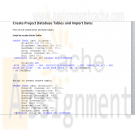
IT452 Unit 10 Final Project Misty Tutoring Business
$20.00IT452 Unit 10 Final Project
Learn More
In this project, you will create an end-to-end solution to meet a business need. This project is worth 200 points.
Scenario
Your good friend, Misty, has a tutoring business in Southern California. It is quite successful. A client will call with a tutoring need, and Misty will look on her Excel spread sheet of tutors for those qualified in the tutoring area the client needs, and who live near the client.
Misty now has approximately 20 freelance tutors registered with her. It has become quite difficult for her to tell what tutors are qualified and live near the client. You have told her you will develop a way for her to get such a list.
She has sent you the TutorList.xls file with the current list of tutors. (This file is available in Doc Sharing.) The Subject column has values of A (tutor is proficient in English and history), B (tutor is proficient in math and science), or C (tutor is proficient in all basic subjects). Hint: You need to create a database that consists of the data in these to files. The DateQualified column has the latest date the tutor was interviewed and checked out by Misty. In addition, she has provided the current term’s client list (Clients.xls). You will need to use BULK INSERT to load the data from the sheets into the tutoring database and write queries that find tutors in the same zip code as the client and provide the tutor in the same zip code in a report. Misty should be able to select the zip code as a parameter from the tutors in the report and the zip code as a parameter from the clients as a parameter to execute the reports.
Misty also requires that she should be able to interact with a Web page, because she does not want to know how to "run database software". This will require creating a web based report that she can access via a web link.
The first thing you should do is list the steps in your plan. What will be the major steps you need to take to accomplish your goal? The first step will be to install SQL Server 2008 Express with Advanced Services on Misty's computer. (She has agreed to that part of the plan.) The last step will be to create a report that asks for parameter values for a stored procedure or query at run time. This does not literally need to be done but should be a step in the plan if you advise her that it is needed on her machine.
For the purpose of this project, you will use your computer to work out the steps and create the report.
The first item to place in your final project document is your outline of major steps that need to be accomplished. Label this section:
1. Outline – 20 points
<Put your plan step list here.> (The outline will be worth 20 points.)
Then, for each step after the first (the installation step), make a section in your project, e.g.
2. <Whatever Step 2 is in your plan outline> - 80 points
In that section, state how you accomplished that step and/or give the code you used. Enough detail should be given so a knowledgeable person could completely recreate what you did. Show at least some of the results you obtained when you tested to see whether your step had been accomplished. (For
queries, 3 or 4 lines of output, and stating the number of lines returned is sufficient.) If a screen shot is the best way to demonstrate the results, include it in your project. Please use ALT+PrintScreen so that only the in-focus or active window, not the entire desktop, is copied.
[Note: You are starting with step 2, because step 1 of your plan is the installation, and it will be assumed that you know how to do that.]
[Hint: One of your steps should be the creation of a stored procedure that uses a variable for the zip code and determines which tutors live in the same zip code as the client. But, this step will be carried out in #3 below so you might want to letter your steps to avoid confusion.
3. Create the query or stored proc. that will produce the result set for the report - 40 points (Creation and Alter)
Create Procedure – 20 points
Alter Procedure – 20 points
The query / stored procedure that generates the result set for the report will be worth 20 points each. You then will also Alter the Stored Procedure one time and execute it. You should determine that it gives the desired results before configuring your report. Hint: The SELECT query portion of the stored procedure will be the query you use in your report datasource when you get to the portion of the design wizard (if you use the wizard instead of manually creating everything).
4. [The last step.] Configuring the Report and the Report Parameters – 60 points
Query for Report 20 points
Configuring Parameters – 20 points
Configuring/Designing 2 reports – 20 points
The final 60 points will be for the last step in your plan – configuring the report and the parameters for the report. The tutor subject choices should be A, B, or C. The date selection should be from the DateQualified values, with a default value of the earliest DateQualified. The customer zip code must be one of those in the TutorList. [Hint: The latter two parameter items require creation of additional data sets, one for the DateQualified values, and one for the zip code values. Hint: Each of the datasets should use a SELECT query as well to provide the data for the parameter. Look at what you did in Project 9 as an example. The DateQualified data set will have datetime data type. Each parameter will become a drop down on your report.
You should place four screen shots under this final step in your project document.
1. For the parameter that specifies Misty's choice of a tutor that resides in the same zip code as the client show one such client/tutor example.
2. For the parameter that specifies Misty's choice of minimum DateQualified, show how you have configured the Available Values for that parameter.
3. Show the Report Data pane of BIDS, showing all parameters and all data sets with their fields.
4. Deploy the report. Run the first report that does not contain parameters for zip code 91016. This one should show only the tutors available for that zip code. Run the second report with parameters for a customer zip code of 91803 for the report with parameters showing which client they qualify to work with, what their skill set is, and date equal to the earliest DateQualified value. Paste the screen shot of this report into your project document.
Because the entire project involves sequential steps, if you become hung somewhere in the middle and cannot proceed, you may send details to your instructor, and receive a hint in exchange for an appropriate point "cost" or deduction. If you cannot figure out what query you need to create the report, the instructor will send it to you, on request from you, for a "cost" of 20 points so you can move on.
Your screen shot of the report without parameters should look similar to this on the Report BIDS screen. It should be for ZipCode 91016 regardless to subject and qualified date:
Your screen shot of the report without parameters should look similar to this on the Report Manager screen:
Your screen shot of the report with parameters should look similar to this on the Report BIDS screen It should be for ZipCode 91803 regardless to subject and qualified date:
Your screen shot of the report with parameters should look similar to this on the Report Manager screen: -
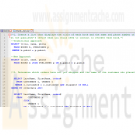
IT358 Unit 5 INNER JOIN OUTER JOIN subquery
$20.00IT358 Unit 5 INNER JOIN OUTER JOIN subquery
Learn More
Outcomes addressed in this activity:
Create a query with an INNER JOIN
Create a query with an OUTER JOIN
Create a query that contains a subquery
Project requirements:
In this project, you will write joins and subqueries:
1. Complete the Hands-on Assignments #1–5 for Chapter 9.
2. Complete the Hands-on Assignments #1–5 for Chapter 12.
Oracle 11G SQL Chapter 9 Hands-On assignment Solution
Generate and test two SQL queries for each of the following tasks: (a) the SQL statement needed to perform the stated task using the traditional approach, and (b) the SQL statement needed to perform the stated task using the JOIN keyword.
1. Create a list that displays the title of each book and the name and phone number of the person at the publisher’s office whom you would need to contact to reorder each book.
2. Determine which orders have not yet shipped and the name of the customer who placed each order. Sort the results by the date on which the order was placed.
3. List the customer number and names of all individuals who have purchased books in the fitness category.
4. Determine which books Jake Lucas has purchased. Perform the search using the customer name, not the customer number.
5. Determine the profit of each book sold to Jake Lucas. Sort the results by the date of the order. If more than one book was ordered, sort the results by the profit amount in descending order. Perform the search using the customer name, not the customer number.
Oracle 11G SQL Chapter 12 Hands-On assignment Solution
Use a subquery to accomplish each of the tasks. First, execute the query you will use as the subquery to verify the results.
1. Determine which books have a retail price that is less than the average retail price of all books sold by JustLee Books.
2. Determine which books cost less than the average cost of other books in the same category.
3. Determine which orders were shipped to the same state as order 1014.
4. Determine which orders had a higher total amount due than order 1008.
5. Determine which author or authors wrote the book(s) most frequently purchased by customers of JustLee Books. -
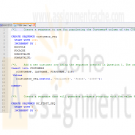
IT358 Unit 7 Synonyms Index and Sequence
$20.00IT358 Unit 7 Synonyms Index and Sequence
Learn More
Outcomes addressed in this activity:
Describe how the schema objects work
Describe how sequences and indexes are created, modified, and removed within Oracle
Describe when to use an Index
Utilize Synonyms
Project requirements:
In this project, you will create a view, synonym, and index:
1. Answer the Review Questions #1–5 from Chapter 6.
2. Complete Hands-on Assignments #1-10.
Oracle 11G SQL Chapter 6 Hands-On assignment Solution
1. Create a sequence to use for populating the Customer# column of the CUSTOMERS table. When setting the start and the increment values, keep in mind that data already exists in this table. The options should be set to not cycle the values, not cache any values, and no minimum or maximum values should be declared.
2. Add a new customer row using the sequence created in Question 1. The only data currently available for the customer is as follows: last name = Shoulders, first name = Frank, and zip = 23567.
3. Create a sequence that will generate integers starting with the value 5. Each value should be three less than the previous value generated.The lowest possible value should be 0, and the sequence should not be allowed to cycle. Name the sequence MY_FIRST_SEQ.
4. Issue a SELECT statement that will display NEXTVAL for MY_FIRST_SEQ three times. Because the value is not being placed in a table, use the DUAL table in the FROM clause of the SELECT statement. What causes the error on the last SELECT?
5. Change the setting of MY_FIRST_SEQ so the minimum value that can be generated is –1000.
6. Create a private synonym that will allow you to reference the MY_FIRST_SEQ object as NUMGEN.
7. Use a SELECT statement to view the CURRVAL of NUMGEN. Delete the NUMGEN synonym and MY_FIRST_SEQ.
8. Create a Bitmap index on the CUSTOMERS table to speed up queries that search for customers based on their state of residence. Verify that the index exists, and then delete the index.
9. Create a B-tree index on the customer’s Last Name column. Verify that the index exists by querying the data dictionary. Remove the index from the database.
10. Many queries search by the number of days to ship (number of days between the order and shipping dates). Create an appropriate index that might improve the performance of these queries. -
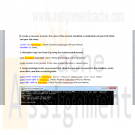
IT358 Unit 8 Users and Roles
$20.00IT358 Unit 8 Users and Roles
Learn More
Outcomes addressed in this activity:
Create users
Create roles
Use the GRANT and REVOKE statements
Create and access database links
Project requirements:
In this project, you will work with privileges, roles, and passwords:
1. Answer Review questions 1–5 from Chapter 7.
2. Complete Hands on Assignments #1-10 from Chapter 7
Oracle 11G SQL Chapter 7 Hands-On assignment Solution
1. Create a new user account. The name of the account should be a combination of your first initial and your last name.
2. Attempt to log in to Oracle 10g using the newly created account.
3. Assign privileges to the new account that allow the new user to connect to the database, create new tables, and alter an existing table.
4. Using a properly privileged account, create a role named customerrep that allows new rows to be inserted into the ORDERS and ORDERITEMS tables and allows rows to be deleted from those tables.
5. Assign the account created in Assignment 1 the customerrep role.
6. Log in to Oracle 10g using the new account created in Assignment 1. Determine the privileges currently available to the account.
7. Revoke the privilege to delete rows in the ORDERS and ORDERITEMS tables from the customerrep role.
8. Revoke the customerrep role from the account created in Assignment 1.
9. Delete the customerrep role from the Oracle 10g database.
10. Delete the user account created in Assignment 1. -
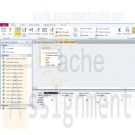
Microsoft Access 2010 Chapter 2 Lab 1: Querying the ECO Clothesline Database
$20.00Microsoft Access 2010 Chapter 2 Lab 1: Querying the ECO Clothesline Database
Learn More
Problem: The management of ECO Clothesline has determined a number of questions it wants the database management system to answer. You must obtain answers to the questions posed by management.
Instructions: Use the database modified in the In the Lab 1 of Chapter 1 on page AC 66 for this assignment, or see your instructor for information on accessing the files required for this book.
Perform the following tasks:
1. Open the ECO Clothesline database and create a new query for the Customer table that includes the Customer Number, Customer Name, Amount Paid, and Sales Rep Number fields in the design grid for all customers where the sales rep number is 49. Save the query as Lab 2-1 Step 1 Query.
2. Create a query that includes the Customer Number, Customer Name, and Amount Paid fields for all customers located in Virginia (VA) with a paid amount greater than $1,000.00. Save the query as Lab 2-1 Step 2 Query.
3. Create a query that includes the Customer Number, Customer Name, Street, and City fields for all customers whose names begin with T. Save the query as Lab 2-1 Step 3 Query.
4. Create a query that lists all cities in ascending order. Each city should appear only once. Save the query as Lab 2-1 Step 4 Query.
5. Create a query that allows the user to enter the city to search when the query is run. The query results should display the Customer Number, Customer Name, Balance, and Amount Paid fields. Test the query by searching for those records where the client is located in Ashton. Save the query
as Lab 2-1 Step 5 Query.
6. Include the Customer Number, Customer Name, and Balance fields in the design grid. Sort the records in descending order by the Balance field. Display only the top 25 percent of the records in the query result. Save the query as Lab 2-1 Step 6 Query.
7. Join the Sales Rep and the Customer table. Include the Sales Rep Number, First Name, and Last Name fields from the Sales Rep table. Include the Customer Number, Customer Name, and Balance from the Customer table. Sort the records in ascending order by sales rep’s last name and customer name. All sales reps should appear in the result even if they currently have no customers. Save the query as Lab 2-1 Step 7 Query.
8. Open the Lab 2-1 Step 7 Query in Design view and remove the Sales Rep table. Add the Amount Paid field to the design grid. Calculate the total of the balance and amount paid amounts. Assign the alias Total Amount to the calculated fi eld. Change the caption for the Balance field to Due. Save the query as Lab 2-1 Step 8 Query.
9. Create a query to display the average balance amount for all customers. Save the query as Lab 2-1 Step 9 Query.
10. Create a query to display the average balance amount for sales rep 51. Save the query as Lab 2-1 Step 10 Query.
11. Create a query to display the average balance amount for each sales rep. Save the query as Lab 2-1 Step 11 Query.
12. Create the crosstab shown in Figure 2 – 92. The crosstab groups the total of customers amount paid amounts by state and sales rep number. Save the crosstab as State-Sales Rep Crosstab.
13. Submit the revised database in the format specified by your instructor. -
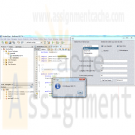
Dreams Travel Agency Java GUI Both parts
$20.00Dreams Travel Agency Java GUI Both parts
Learn More
Field of Dreams Travel Agency has begun offering travel packages to baseball fans wanting to attend major league baseball games. The company offers a package allowing a fan to attend games in four cities of his or her choice, including transportation by car, tickets, lodging, and food. Assume that the fan lives in the city hosting one of the 30 major league baseball teams. The fan will travel from his or her home to the city of one of the teams of his choice, then will proceed to the city of one of the other teams and so on until all teams have been visited. Then, the fan will return home. Create a Java program that will compute the minimum cost of the trip. Your cost will be the cost of transportation (fuel cost per gallon/ miles per gallon * number of miles between ballparks), cost of tickets, cost of lodging, and cost of food. Ask the user his home city, which cities he wants to visit, the price of fuel, the fuel economy of his vehicle, the cost of lodging per day and the cost of food per day. Your program will compute the costs of all 24 possible routings and choose the minimum cost route. Mark up the minimum cost by 20% to arrive at the cost that will be quoted to the customer.
For this week, you need only to create the GUI using Java Swing and create the basic classes that will accept the inputs from the user. We will create the functionality of these classes in the second assignment.
We will discuss strategies for preparing this program in the first week of class and you can create the program in the second week of class. That is done and I have a program with no function so here is the second part: Expand the model classes you created in the first assignment. Implement the functionality that will use the inputs offered by the user and prepare a quote for the customer according to the requirements specified in the first assignment. Upon clicking a Quote button on the GUI, the program should post a dialog box with the quote. Upon clicking the Print Quote button, write the quote out to a text file. This program was built on NETBEANS





